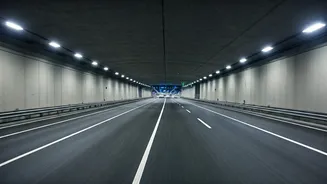The Shocking Statistics
The Delhi Directorate of Education (DoE) recently reported some unsettling figures concerning the performance of Class 10 students enrolled in the National
Institute of Open Schooling (NIOS) project over the last four years. A staggering 70% of these students have not been successful in their examinations. This revelation underscores the need for a thorough examination of the NIOS project's effectiveness within the Delhi education system. The NIOS is designed to provide educational opportunities to those who, for various reasons, cannot attend traditional schools. The high failure rate among this cohort indicates that something is amiss, potentially related to the program's structure, the support provided to students, or the methods of assessment.
NIOS Project Details
The NIOS project, implemented under the Delhi DoE, aims to offer education to students who might find it challenging to attend regular schools. This includes individuals who may be working, have health issues, or face other constraints. The NIOS provides a flexible and accessible learning environment with open learning systems, allowing students to study at their own pace. However, the recent statistics showing a 70% failure rate raise questions about the program's capacity to effectively fulfill its objectives. It’s crucial to investigate the specific reasons behind this high failure rate within the framework of the NIOS project, considering all its core features. This includes evaluating the quality of study materials, the adequacy of teaching, and the support systems available to the students.
Impact of the Results
The high failure rate among Class 10 students in the NIOS project has significant implications. First and foremost, it affects the students themselves. Failure can lead to a loss of confidence, frustration, and a delay in their academic progression. Beyond the individual students, the results raise broader concerns about the NIOS project's overall efficacy. It suggests that the program is not adequately equipping students with the knowledge and skills required to succeed in their examinations. Moreover, these figures might also be indicative of broader challenges within the Delhi education system, such as disparities in educational resources or inadequacies in supporting vulnerable student populations. Addressing these issues requires a multi-faceted approach, encompassing improvements to the NIOS project and wider strategies to enhance educational quality across the board.
Addressing the Issues
To improve the current situation, the Delhi DoE will need to carefully analyze the factors that contributed to the 70% failure rate among Class 10 NIOS students. This analysis should include an evaluation of the curriculum, teaching methodologies, and the available support for the students. Some key areas to consider are the relevance and quality of the study materials, the qualifications and training of the instructors, and the availability of resources such as libraries and online support. Furthermore, it's essential to understand the specific challenges faced by NIOS students, which may include lack of access to technology, difficulty with self-study, or the absence of sufficient parental support. Addressing these issues will likely require a combination of policy changes, resource allocation, and targeted interventions designed to enhance the effectiveness of the NIOS program and improve the outcomes for participating students.
Future Improvements
Looking ahead, the DoE should consider various improvements for the NIOS project in Delhi. Revamping the curriculum to make it more relevant and engaging is important, as is ensuring that the teaching staff are highly qualified and well-trained in methods suited for open learning environments. Investing in better study materials, including online resources and interactive learning tools, will be very helpful. Providing more robust support systems for students, such as tutoring, mentoring programs, and counseling services, is also recommended. In the long term, monitoring the progress of the program by regularly collecting and analyzing data, and using feedback from students and teachers, will be vital to making informed decisions and continuous improvements. The goal is to create an educational system within the NIOS that effectively supports students in their learning journey and ultimately helps them succeed.














